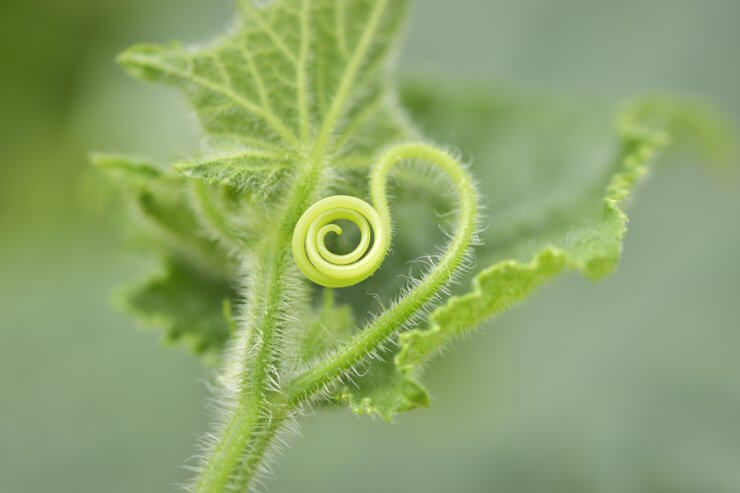
Ever looked at those curly little tendrils on your cucumber plants and thought, “What’s the big dill?” (Sorry, couldn’t resist that one!) Those spiral-shaped plant parts aren’t just nature’s version of Velcro–they’re actually sophisticated communication devices that can tell you volumes about how your plants are doing. As someone who’s spent more time staring at cucumber vines than is probably healthy, I’m here to share why these twisty botanical wonders deserve your attention.
The Secret Language of Tendrils: More Than Just Plant Fingers
Let’s face it–cucumber tendrils are basically the plant equivalent of those sticky hands toys we all played with as kids. They reach out, grab onto whatever they can find, and hold on for dear life. But unlike those sticky toys that inevitably collected so much lint they became useless, cucumber tendrils have evolved over millions of years to be sophisticated climbing structures.
When you see a tendril forming that perfect spiral shape (what botanists call “circumnutation”), that’s actually a sign of a healthy plant with proper turgor pressure. In human terms, your cucumber has good blood pressure! If those tendrils are limp, straight, or barely curling, your plant is trying to wave a tiny white flag saying, “Hey! I’m thirsty over here!”
“I’ve seen gardeners freak out about wilting leaves while completely ignoring sad, straight tendrils,” says Dr. Maria Chen, plant physiologist at Cornell University. “But tendrils are often the first indicators of water stress, sometimes days before leaves show symptoms.”
Tendril Watching: It’s Like Bird Watching, But Way Less Movement
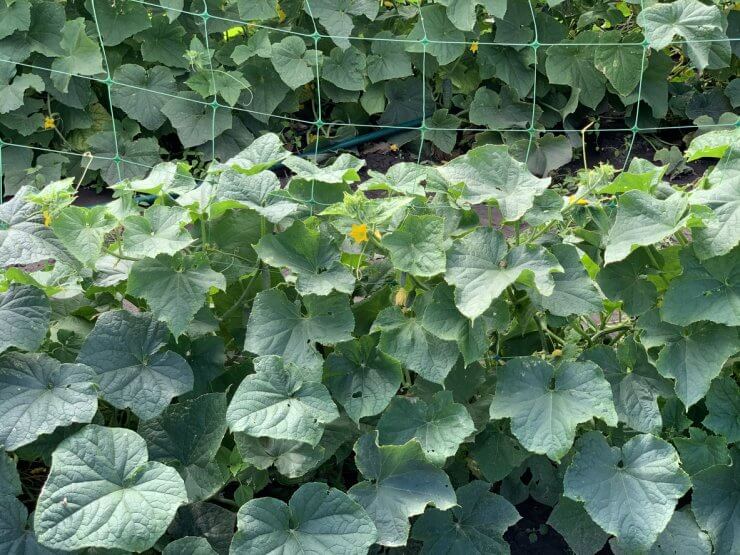
Next time you’re out in the garden (coffee in hand, obviously–we’re not animals), take a moment to really observe your cucumber tendrils. Healthy ones complete a full 360-degree coil in about 24 hours. Too fast, and you’ve got excess nitrogen. Too slow, and you might have a calcium deficiency.
Here’s a quick tendril troubleshooting guide:
- Tight, uniform coils: Happy cucumber!
- Loose, irregular coils: Check your watering schedule
- Reddish tendrils: Phosphorus deficiency (or your plant got a sunburn)
- Tendrils that reach but don’t grab: Your trellis material might be too slick
I once spent an entire weekend filming time-lapse videos of cucumber tendrils reaching for supports. My spouse thought I’d finally lost it, but the resulting footage was strangely mesmerizing–like watching a very slow, very green octopus exploring its surroundings.
The Science Behind the Spiral: Plant Physics That Would Make Einstein Proud
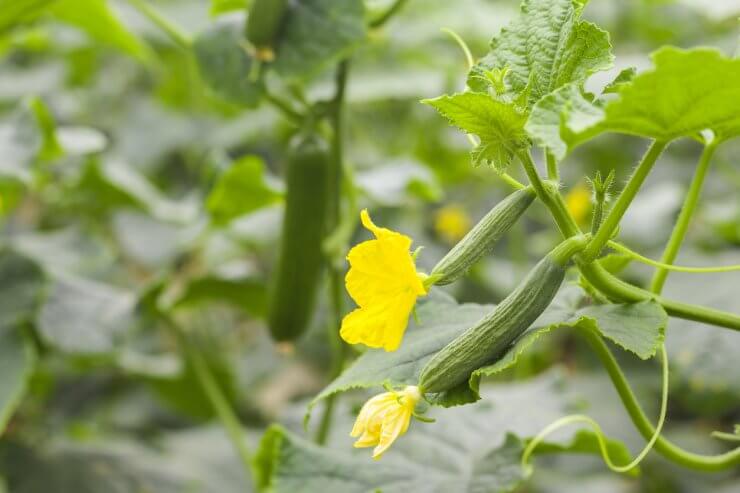
Here’s where we get to the cool science part. Those spiral shapes aren’t random–they’re actually carefully engineered structures that follow mathematical principles. The inside of a tendril contracts while the outside stretches, creating internal tension that allows the plant to pull itself upward with surprising strength.
“Cucumber tendrils can lift up to 150 times their own weight,” explains botanist Dr. Lee Jamison. “If humans could do that, we’d be lifting small cars with our pinky fingers.”
This coiling action follows what mathematicians call a “helical bivergence pattern”–the same pattern found in DNA and certain galaxies. Your cucumber plant is basically a tiny universe in your backyard. Mind blown? Mine too, and I’ve been studying these things for years!
When Tendrils Go Rogue: Troubleshooting the Twisters
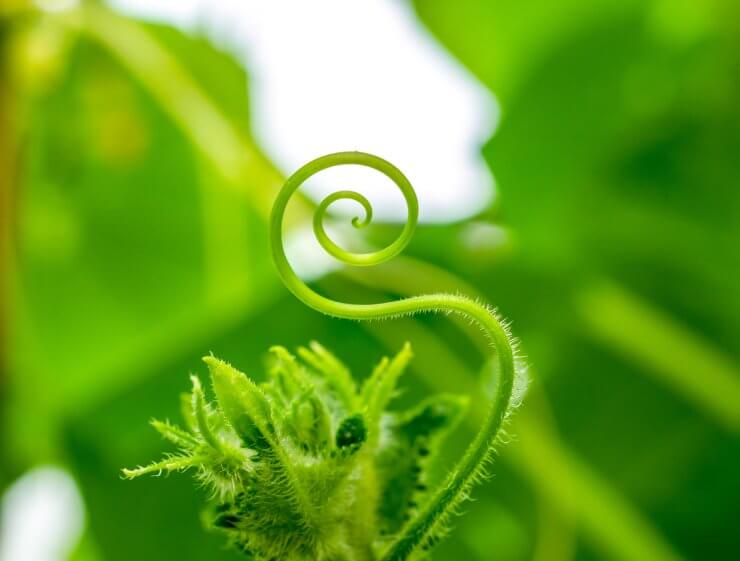
Not all tendril behaviors are created equal. Sometimes these little plant appendages can reveal serious issues before they become garden catastrophes.
If your tendrils suddenly change direction or seem confused about where to grow, check for inconsistent light patterns. Cucumbers, like that friend who can never make up their mind about dinner plans, get very confused with irregular lighting. They quite literally “reach for the light,” so if your tendrils are growing in circles, your plant might be experiencing light coming from multiple directions.
“Tendril confusion is real,” says urban gardener Tasha Williams. “I once had cucumber tendrils that grew in perfect squares because of how the light reflected off my apartment windows. Weirdest thing I’ve ever seen in my garden.”
Another warning sign: tendrils that grab onto their own plant. This “self-grabbing” behavior usually indicates crowded conditions. Your cucumber is essentially saying, “If you won’t give me space to spread out, I’ll just strangle myself instead.” Pretty dramatic for a vegetable, right?
Variety Matters: Not All Cucumbers Are Tendril Equals
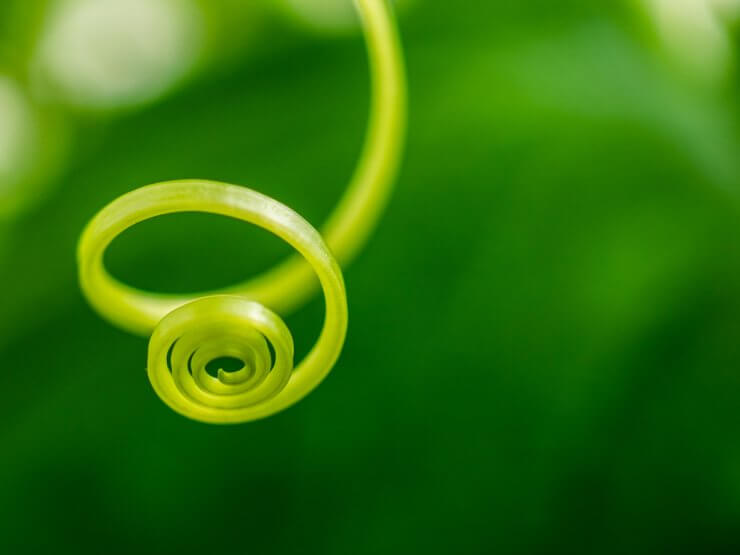
Different cucumber varieties display different tendril behaviors. Those fancy English cucumbers (Cucumis sativus ‘Telegraph Improved’) produce fewer but stronger tendrils than your standard pickling cucumbers. Heirloom varieties like ‘Lemon’ cucumbers have tendrils that seem perpetually confused–they’ll grab onto anything, including your garden gloves if you stand still long enough.
For beginners, I recommend varieties with strong, obvious tendril patterns. ‘Marketmore 76’ and ‘Straight Eight’ produce textbook-perfect tendrils that are easy to read. On the other hand, avoid ‘Bush Champion’ if you’re trying to learn tendril language–they’re the strong, silent type of cucumber that keeps their feelings to themselves.
Supporting Your Climbing Cucumbers: A Tendril’s Dream Home
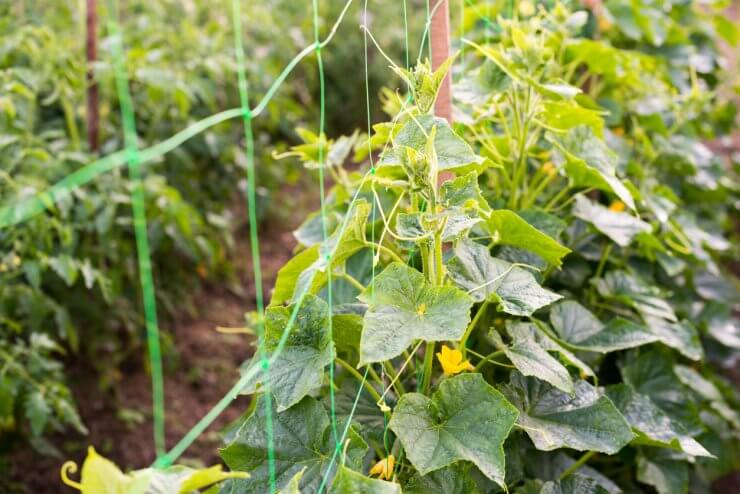
Since we’re talking tendril behavior, we need to address what these little plant fingers prefer to climb on. While cucumbers aren’t particularly picky, they do have preferences.
Natural jute twine is tendril heaven–the rough texture gives them plenty to grab onto. Plastic trellises? Not so much. I’ve watched tendrils repeatedly try and fail to grab onto smooth plastic surfaces, eventually giving up in what I can only describe as plant frustration.
“Think about your own hands,” suggests master gardener Frank Rodriguez. “Would you rather climb a rope ladder or a glass wall? Tendrils feel the same way.”
Conclusion: Tendril Whispering Is the New Plant Communication
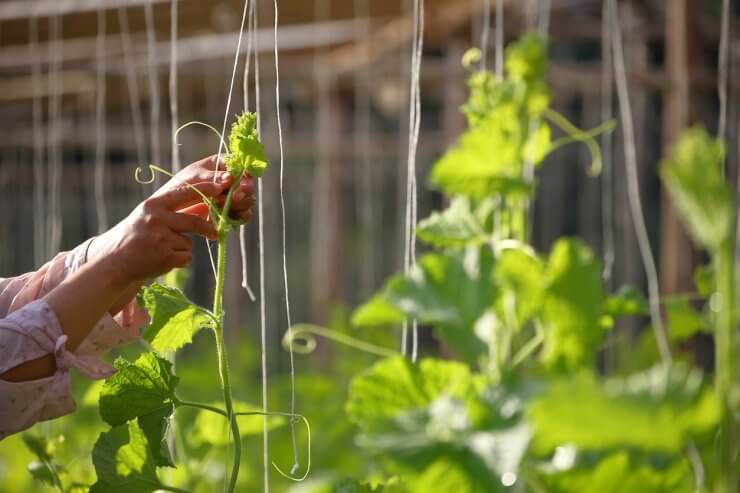
Learning to read tendril patterns is like gaining a secret superpower in the garden. While other gardeners are still poking at soil and fussing with moisture meters, you’ll be observing those spiraling green fingers and knowing exactly what your cucumbers need.
So next time you’re out there among your vines, take a moment to appreciate these ingenious climbing mechanisms. They’re not just helping your cucumbers reach new heights–they’re telling you a detailed story about plant health that most gardeners completely miss.
And if anyone catches you whispering encouragement to your cucumber tendrils? Just tell them you’re practicing advanced horticultural communication techniques. Sounds much better than admitting you’ve been having heart-to-hearts with your vegetables, right?
Remember: in the garden, it’s not about being vine, it’s about paying attention to the little things. Your cucumbers will thank you for it–one perfectly spiraled tendril at a time. Want to learn more about growing cucumbers? Read our Cucumber Gardening Guide!
What have you learned about your cucumbers?


 Previous
Previous

